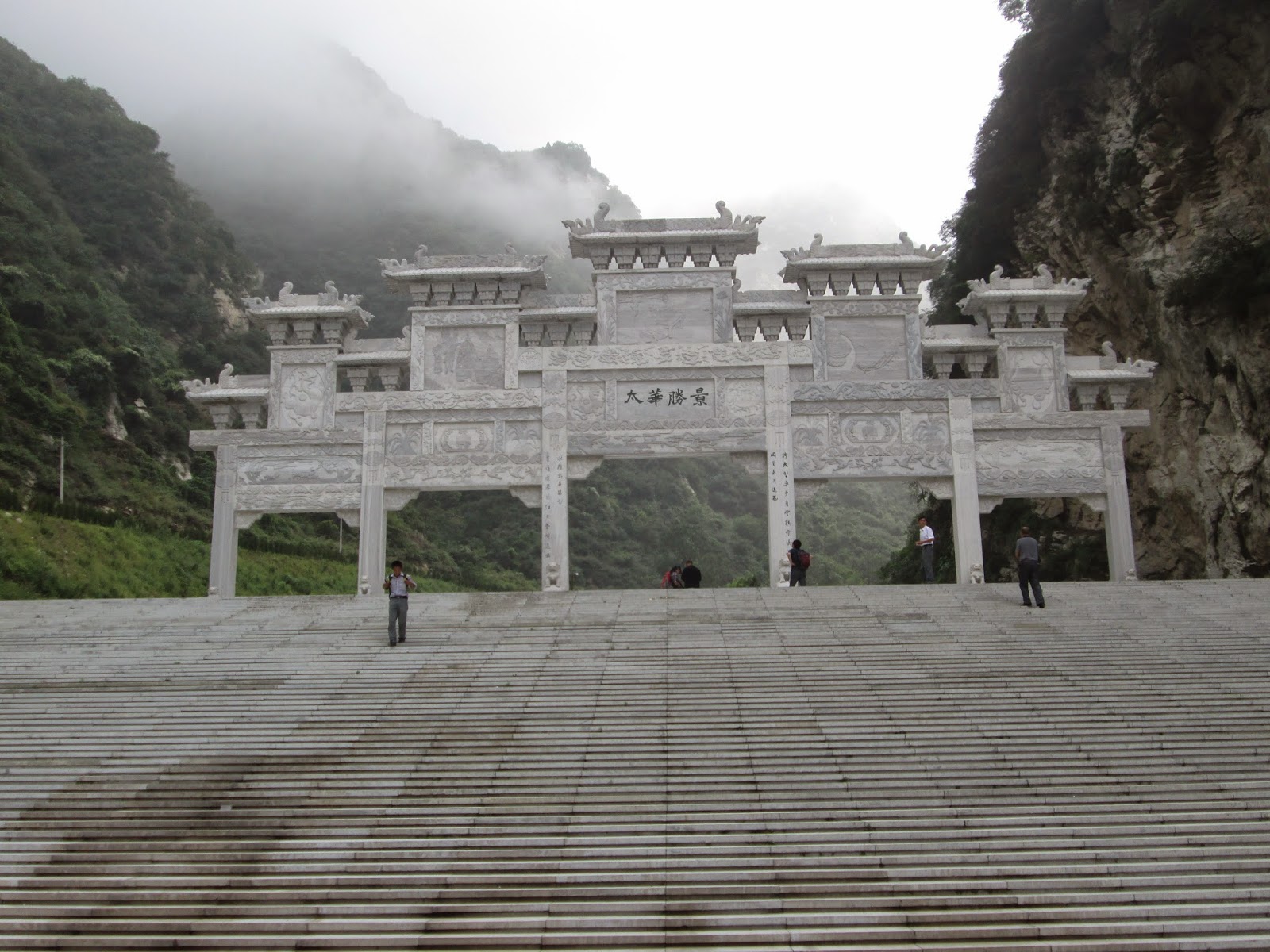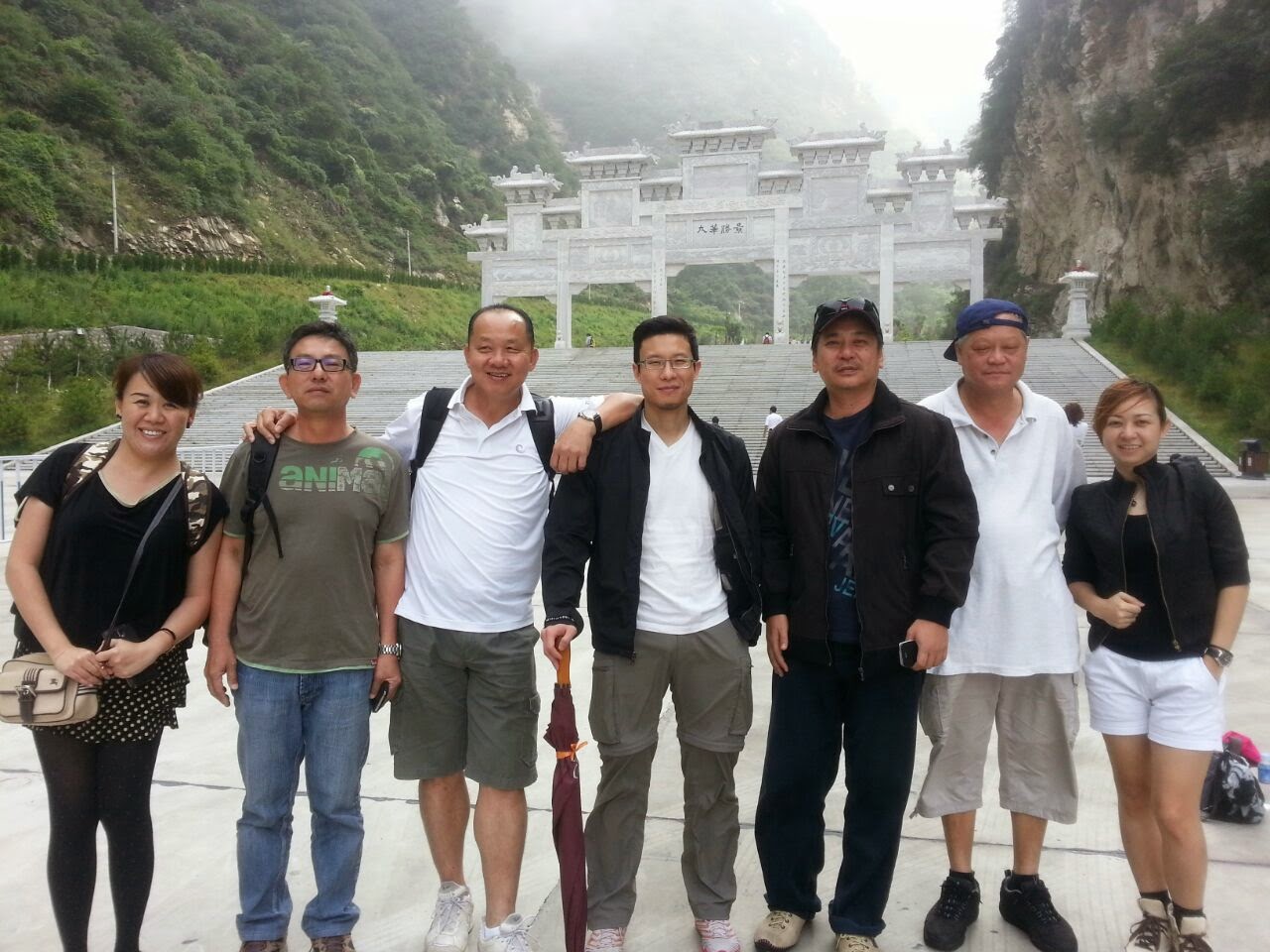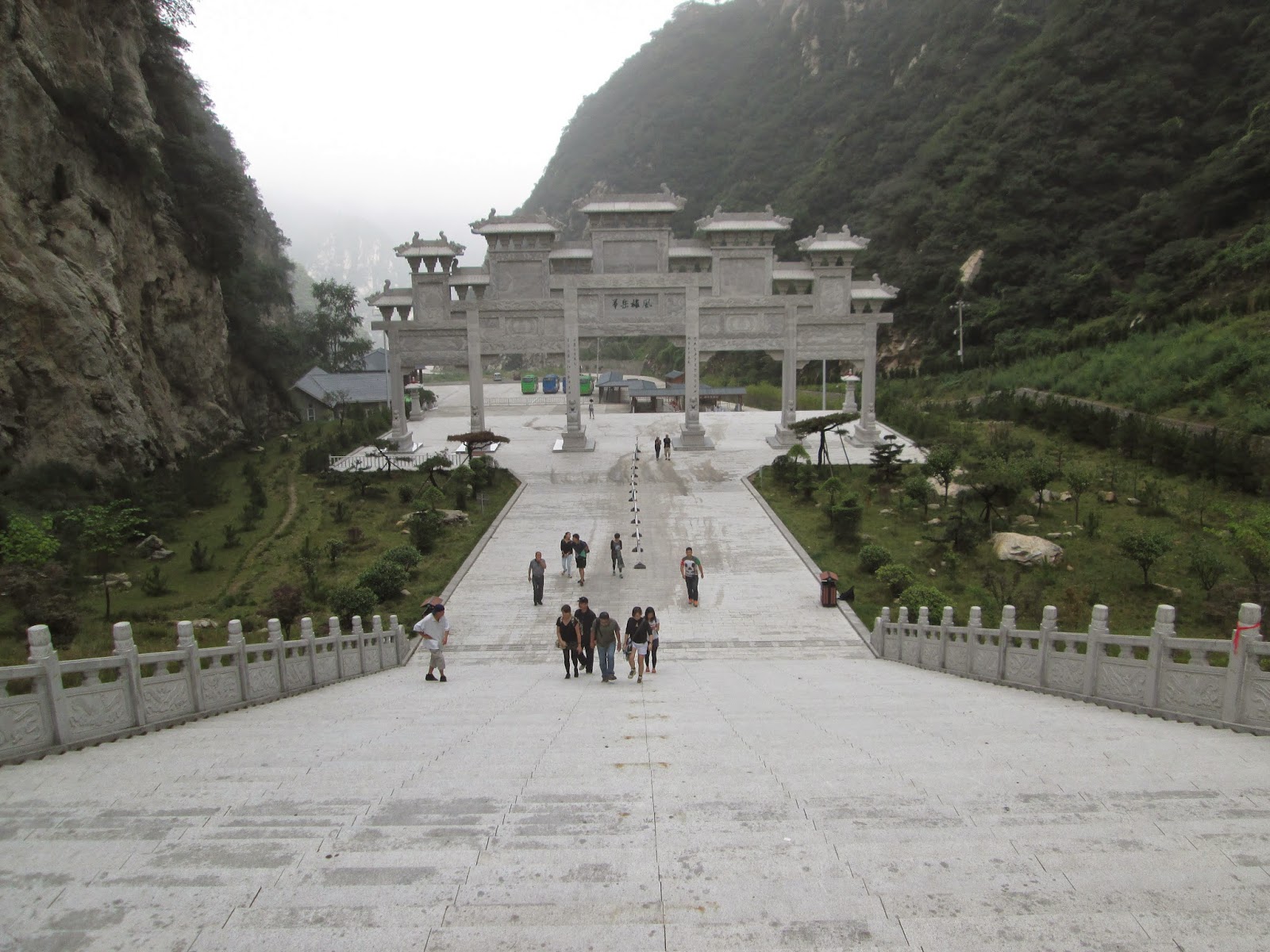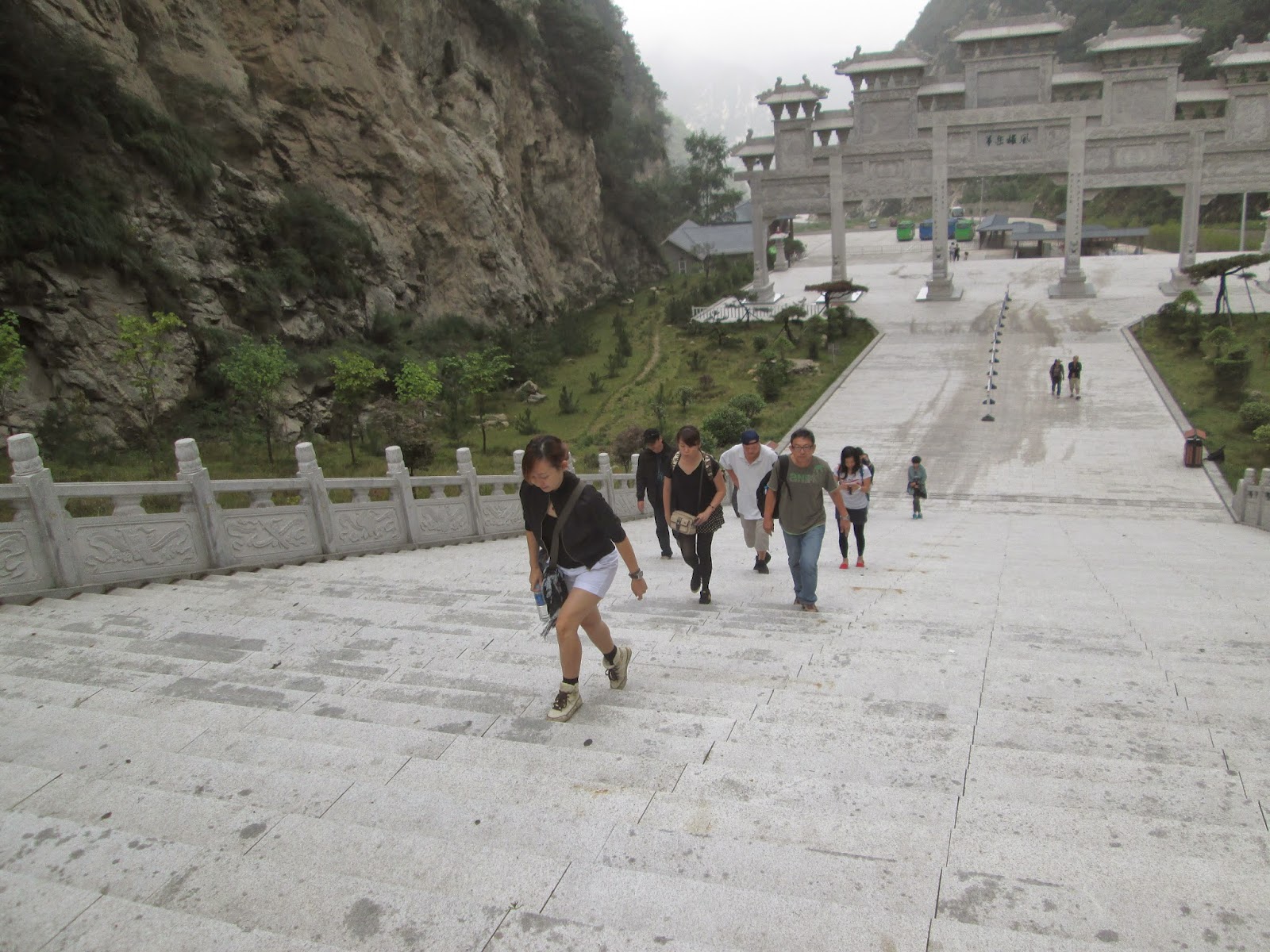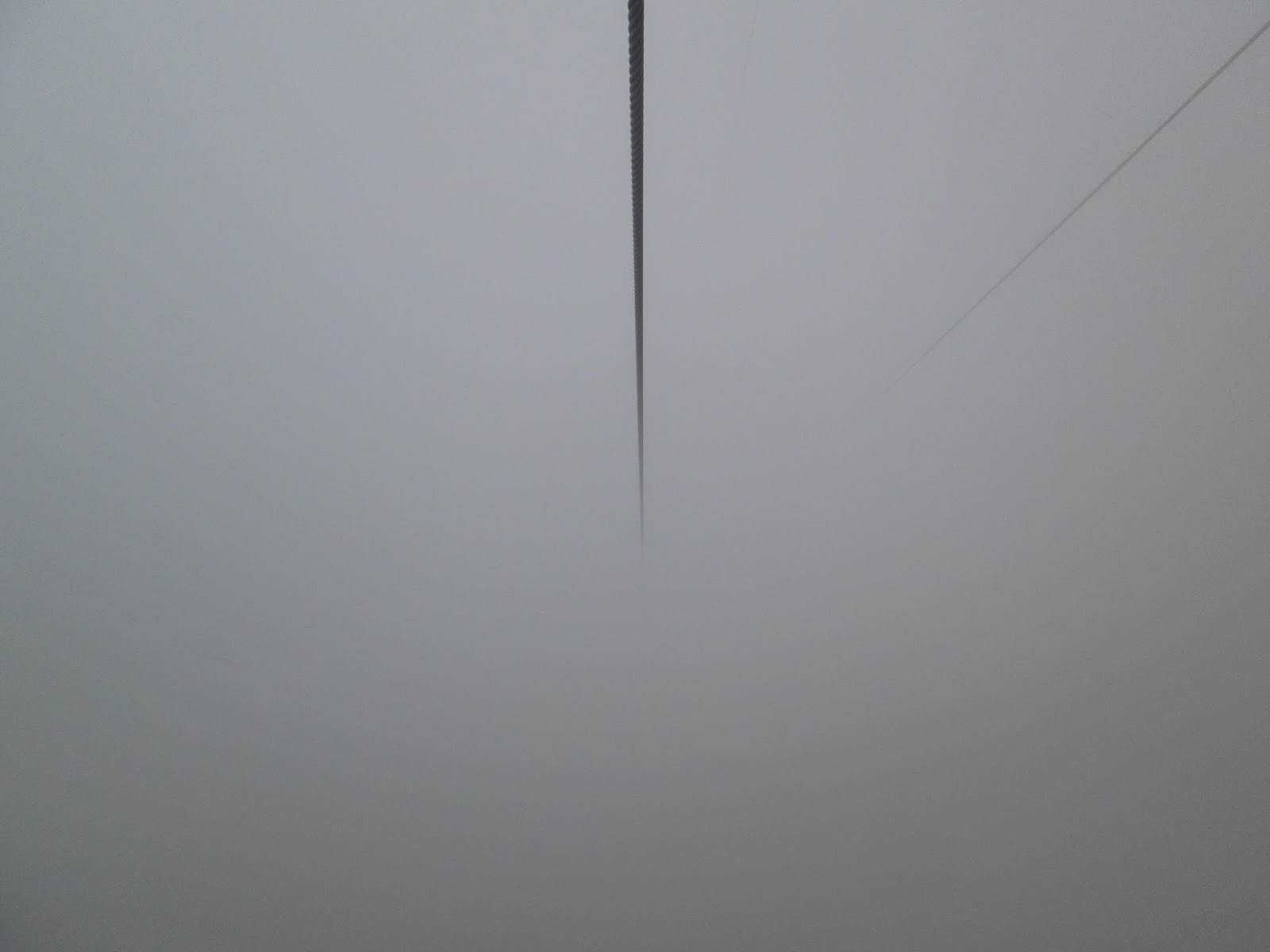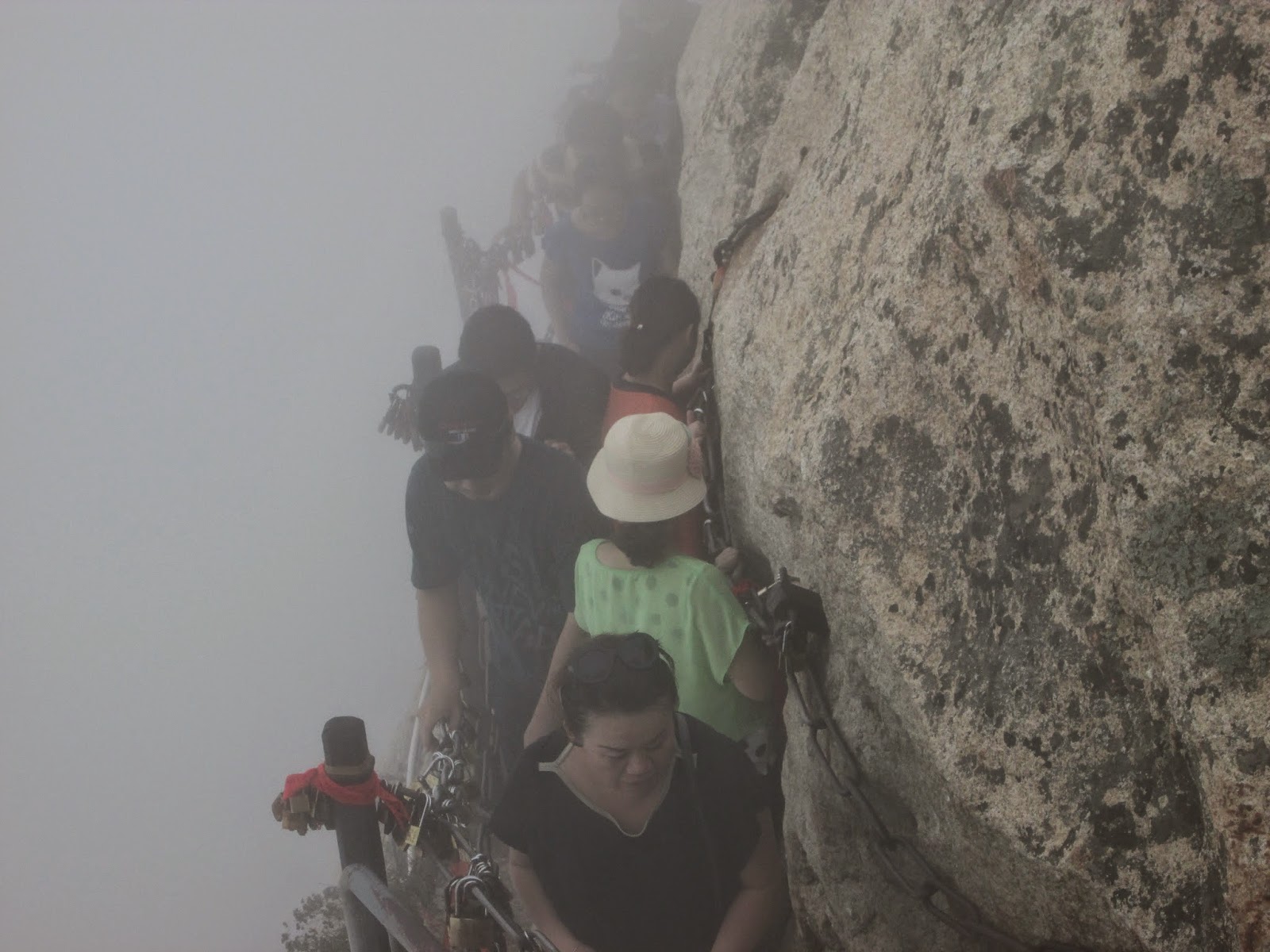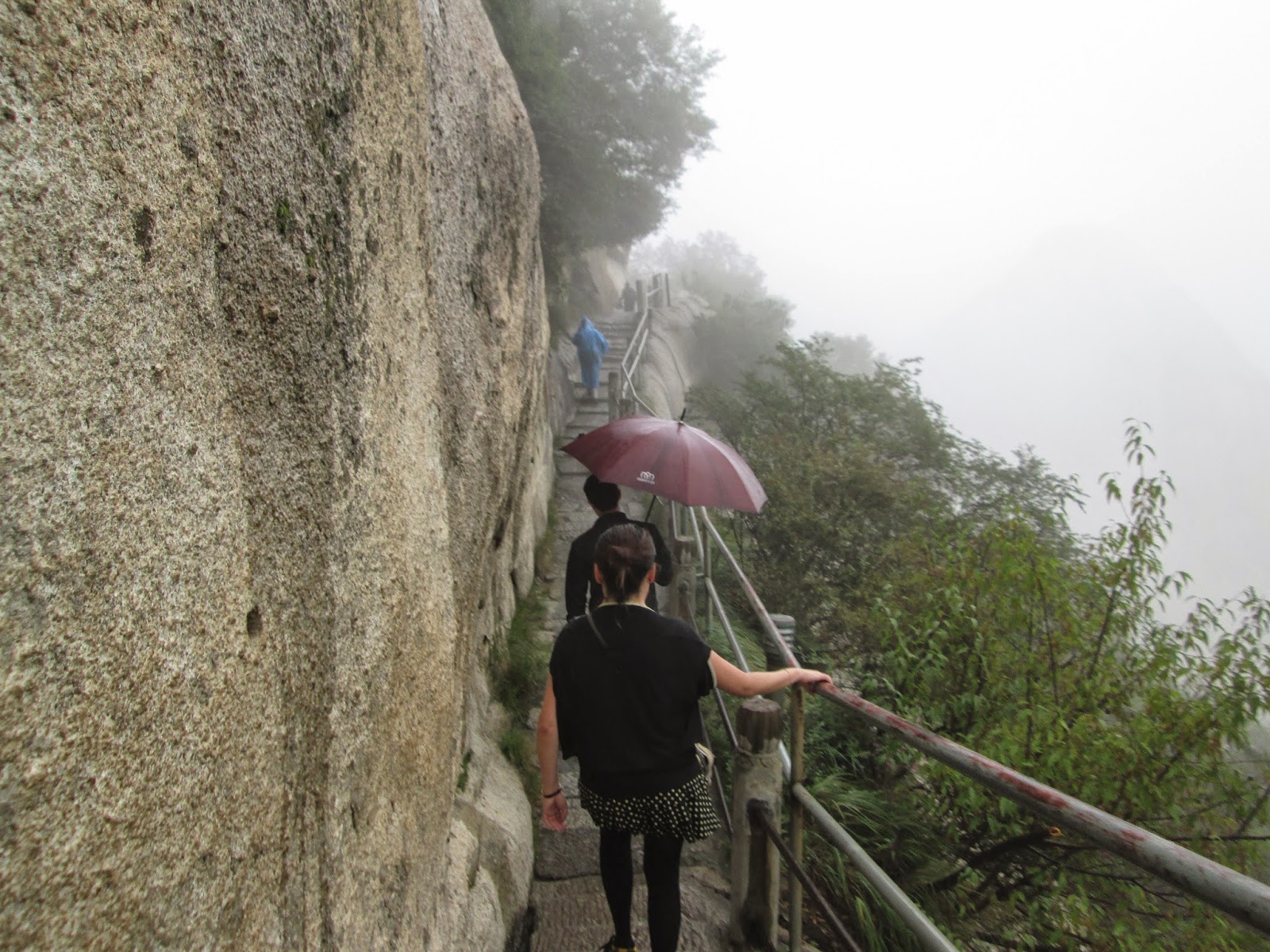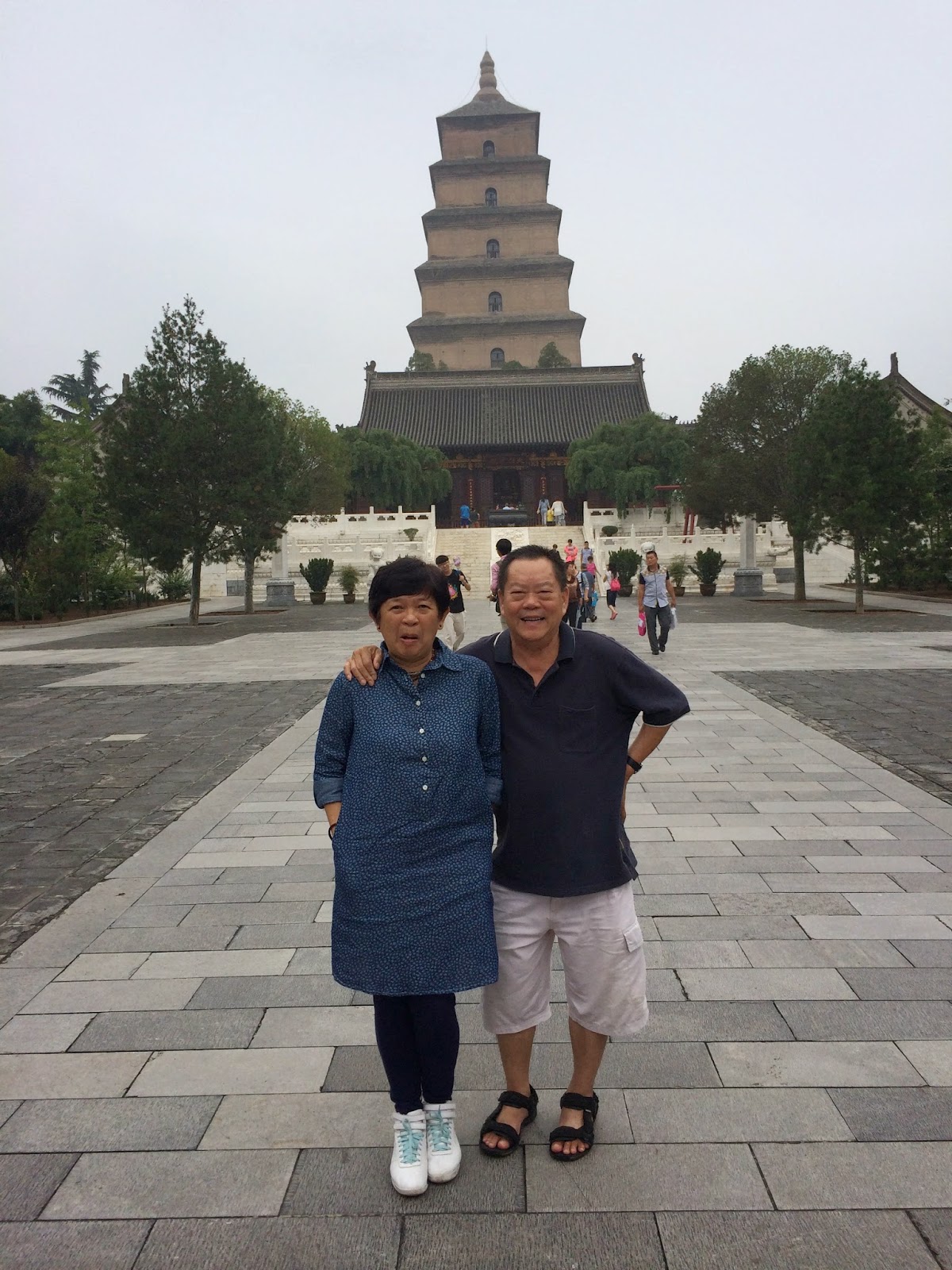This place is truly a cradle of Chinese civilisation and not to be missed by anyone. Our trip begins from 27.8.14 to 2.9.14.
Day 1; 27.8.14. Happy together.
We started arriving from 3.30 pm at KLIA 2. This new airport is huge and had many calling one another. But, soon we all checked in and were on board the flight that took off just after 6.00pm.
Billy had his wife Daisy joining us for the first time.
Edmund too came along with Yu Mei. Affendi is already a regular feature with us.
Luke too is a first timer with us.
Nothing can separate these three.
We are glad to have Chew Kuan and wife with us.
Arrival at Xianyang airport, Xian.
Waiting for our coach to come around.
Come up, to Calrsberg, moving to the world of long cool man!
I did mentioned, inseparable.
An hour later, we were at the reception at Mehood Hotel, within the wall city.
Transformer displayed at the hotel lobby, no terra cotta warriors!
It was almost midnight when we arrived. Most hit the sack after a long day.
Some went across the road to KFC for late supper before retiring for the night.
I love the signages in China. This one is at the hotel lift.
Day 2 : 28.8.14 : A spiritual trip to Yan'an, Huangling County.
Many Han Chinese, overseas Chinese included claims ancestry to Huangdi, The Yellow Emperor. This "anscestor figure" to all Chinese reigns from 2697 BC to 2687 BC and during that time had subdued many opponents in the Battle of Nine Li , Battle of Zhuolu and Battle of Banquan. Together with Shennong, he is credited with improving the lives of his nomadic tribe by taming wild animals, inventing shelter, carts, boats, clothings and medicine. He is also credited to inventing chinese characters, dye and silk.
The Yellow Emperor had four wives which bore him 25 sons. 14 of those started their clan and surnames and over the centuries had evolved into more than 14 clans.
When the Yellow Emperor died, he was more than a hundred years old. Two tombs were built in Shaanxi within the Mausoleum of the Yellow Emperor. It is this Mausoleum that we had planned to visit and to pay our respect to him. From Xian, it is about 160 km away and will take about 3 hours by coach.
All of us had a good sleep and were ready to leave by 9.00 am as planned. This being the first day of sightseeing, we were very excited.
The route to Yan'an, Huangling County.
Gathering outside Hotel Mehood.
Our coach ready to leave.
Billy and Daisy, the happy couple.
At the "Service Area", equivalent to our R & R at our highways. The difference is, the building is huge and new, but the toilets stink!
We stopped at this restaurant for lunch. Nothing fancy at this outlet, just normal tourist food.
Treasurer in charge of our accounts. Going through the bill.
Fruit seller outside the restaurant.
What's that ?
Bee Bee buying some apples.
We head straight for the Mausoleum after lunch. It was just a short 10 minutes drive from the restaurant. We are glad to be at the Mausoleum of the Yellow Emperor, our first item on the itinerary.
On the way to the Mausoleum
Waiting at the souvenir shops outside the entrance.
At the entrance.
Passing by some tablets just after the entrance.
It's a typical chinese design,
courtyard after courtyard.
Then there's a tree, guess what ?
It's been here since Emperor Wudi, 100 years before christ! That's 2100 years old by now!
It's a sacred tree.
Because it is fenced, it kept her out.
This one is not fenced
and guess what, this monkey must swing from the branch. Familiar ?
Going further in,
we saw two huge footprint about 2 feet long.
It's the footprint of the Yellow Emperor. It was created to this humongous size as a symbolic figure that the Emperor is godlike and bigger than the ordinary people.
View of the complex after the bridge.
It's a huge place
The guide explained that this place would be crowded during "ching bing".
It's a huge drum used during ceremonies.
Alicia posing in front of the flags. Did you notice her black and red shoe.
View from atop overlooking the entrance.
This place is vast.
Impressive.
I need a picture here.
A group photo here is a must. This is the sacred place of The Yellow Emperor, our ancestor.
I just need to have one more
And so does Chew Kuan and wife.
The tablet potrait of The Yellow Emperor.
It's at the main hall.
The rest were observers.
It's Billy first,
Then, it's my turn to pay my respect to Huangdi
Linda, our guide explaining the architecture of this building.
Holding up the Sun with one hand
Bee Bee holding up the world
Ladies only picture.
After the temple, we proceeded to the shuttle station.
Chew Kuan and wife in a hurry
All relaxing while waiting for the driver.
These electric shuttle will ferry us to the foothill of Qiao mountain
"We..fie" while traveling in the shuttle.
After that, it is ascending mostly on well constructed steps.
More steps...
more and more.
Here we are, at the entry point to the tomb.
The surroundings
It's spacious with lots of cypress trees
That's the front of the tomb.
A narration by the local guide.
A close up
That's the tablet of Huangdi
Right behind is his tomb, all 4500 years old.
The confirmation of the burial place of the Yellow Emperor.
Affendi, Harold, Chew Kuan and I in front of the tomb.
In ancient China, there are two type of burial ground, one is where the actual body is buried, the other is the burial ground of his belongings. This tomb is the tomb of his belongings, the sword, emperors clothes, books etc. His body was never found.
I have mentioned earlier that Chinese, particularly those overseas Chinese would claim ancestry to the emperor. After all, 14 of his 25 sons had spawned new clans and surnames. Below are the surnames of Alicia and I that was listed in the Chinese literature.
Alicia's family name and emblem.
My family name and emblem.
A close up look of my surname and the Chen clan Coat of Arms.
From the Yellow Emperor, depending on which clan you are, there is a lineage downwards from all his sons. For me, being a Tan clan, I reproduced below how the Yellow Emperor is linked to the Tan clan. The first Tan ( Chen ) is Chen Hu Gong and the chart shows he is the 43rd descendant of Huangdi.
This chart is reproduced from the researched drawn up by Dr Philip Tan, a passionate geneologist who had chart the descendent of Huangdi to Chen Hu Gong. Dr. Philip Tan had helped drawn up my ancestry chart as below up to the first Tan that reside in Yong Chun county, Fujian province. There was a period when there was a mass migration from the central plains of Henan province to the South ending up at Fujian and Guangdong province. That's where we could trace most of our ancestors through the Zupu, a book that detailed family records, maintained and updated by every family in China. This had been practiced for thousands of years in China. The chart of my family ancestors is hanging on the wall of my house. Below is a photo taken of that chart.
The missing link is between Chen Gong ( The first Tan in Yong Chun county) and Chen Hu Gong ( The progenitor of Tan clan ). That's 1000 years gap that have yet to be researched. It is therefore of immense interest that the first thing on my itinerary is to visit the tomb. Knowing that this could be the closest you can get to the primogenitor is a great feeling. That's why I prayed to him when there. It satisfies the soul within. It's also a respect from me, a descendant to The Yellow Emperor my ancestor.
By the time we left Huangling county, it is evening and we reached our hotel at about 7.00 pm. It had been a satisfactory day and we had our dinner at a nice restaurant within walking distance of the hotel.
The restaurant is just within walking distance from the hotel.
The food is pretty good, much better than Yan'an, Huangling.
The bill came up to only half of what we paid for at Huangling County.
Day 3; 29.8.14 : Bullet train to Luoyang.
The plan is to visit Longmen Grottoes at Luoyang and then visit the Shaolin Monastry at Songshan before returning to Xian. Luoyang is more than 400 km away and fortunately, it is connected by bullet train.
We woke up early and was at the station to board the 7.30 am train. It took only 1 3/4 hours to reach Luoyang. We had arranged for another coach to pick us up from the station and head straight to Longmen .
The ancient people in China are firm believers of Buddhism. It must be that the more you revere, the more Buddhist statue you create, the better life you will have in the after life. Sounds familiar? Otherwise, how can one explain that here at Longmen ( Dragon Gate ), there are at least 100,000 buddhist statue carved inside 1400 caves. The smallest staute is a mere 1 inch and the tallest measured at 17 meter. The work of carving the buddhas started in 493AD, during the Northern Wei dynasty and is thought to continue over 4 distinct phases up to 1127AD the Tang Dynasty period. That's 600 over years spent to carve statues! Sadly, since the Sino Japanese war, cultural revolution and other trouble time in the 20th century, the statue, murals and buddha head were vandalised and looted by collectors. Some of these were found to be displayed at Museams in USA !
The train ticket to Luoyang; your passport is required.
Gate about to open. They do queue here.
Looking for the right coach.
Yes, this is the one.
Embarking at the Northern Xian Station
The train is spanking new.
That's how fast the speed it goes.
Excited being a first timer in a fast train.
Outside the Luoyang Station upon arrival.
Yu Mei practicing to be the guide.
It's at least a kilometer walk from where our coach dropped us.
But the weather is cool.
It's nice to be outdoor.
That's Longmen, the Dragon Gate.
A group photo here is appropriate.
It's listed as a Unesco World Heritage site in year 2000
In front of the tallest Buddha.
In awe of the grottoes.
Man would spend their whole life carving this out.
The kilometer long hill is situated alongside the Yi River.
There are so many of these, but some are looted.
Some only have the buddha body without the head. It's being cut off by collectors.
These staircase and walkway brings you right to the caves.
It's up and down all the way.
This photo is superimposed at the biggest buddha statue section.
There are many smaller statues in each grotto, not visible in the photo taken from afar.
Are you kidding me ?
Panorama shot using iphone5s.
This is the main section.
View from the lower platform.
Aaron, our guide explaining the significance of the caves.
Luke and the rest are done with the caves.
We decided to take the boat back to where our coach is waiting.
Everyone wants a good view of the caves from the river.
Only one have the first class view.
That's the view from the Yi River.
It certainly is awe inspiring seeing Longmen Grottoes up close. This is one of the must see if you appreciate history.
Shaolin Monastery
It's almost noon and we have another must see destination, the Shaolin Temple, more than an hour away. This well known temple had caught the imagination of people the world over, particularly the kung fu wannabes. Since the setting up of this temple during the Northern Wei Dynasty in 447 AD, it had gone through a roller coaster of glory days and destruction a few times due to it's involvement in government affairs voluntarily or otherwise. It's during the later years Shaolin kung fu was popularised in the movies by some Hong Kong movie stars such as the late Alexander Fu Sheng, David Chiang, Lo Lieh, Bruce Lee, Jackie Chan, Jet Li and many others. The world came to know about Shaolin martial art after that. The monastery itself under the present Abbot had run the temple like a CEO of a corporation. He had sent his martial art students all over the world to demonstrate the prowess of shaolin kungfu by their stage performance. Many had stayed in various countries to set up Kung Fu school, particularly the western world. The MMA fighters today would come to DengFeng to practice their kungfu technique and they would stay for months or years. Today, everyone one of us would have a few favourite kungfu moves. That's why, we have to visit this Mecca of Kung Fu.
Nearing our destination.
Turning off the highway.
View of part of SongShan montain
All highways are tolled in China.
It is complimentary with the ticket.
We have seen all the moves before.
But the MC does help to keep us stay in focus.
Skillful, but nothing we had not seen before.
More moves by young student.
Weapon demo
Each is skilled at different weaponry.
At the statue of Bodhidharma, the Indian monk that introduced the martial art here.
That's what we are used to.
Outside the compound.
At the entrance
Chew Kuan and wife.
Three kungfu exponent
Then the magnificent five!
At the front temple.
Touring the temple complex.
Can't remember what this urn story is about.
It is a huge complex.
The Abbot room.
Towards the far end of the courtyard.
The stomping of feet during practice had created a depression over the years.
Original murals on the wall.
Another depressed area caused by years of foot stomping during practice.
Holes in tree caused by finger punching practice.
Noise caused by kung Fu wannabes.
Just about 500 meter after the temple, there is another amazing relic, The Pagoda Forest.
It's actually a burial ground for high ranking temple monks.
But we came away happy. It is written on our faces during the shuttle ride down.
It's another long walk to our coach.
This is the first statue we see on the way in, and when going out.
After dinner, our coach took us back to Luoyang train station where we got into the 7.00 am train back.
We used to think China as backward and had not experience modernity
It is actually us that is behind.
None of us had been in a bullet train before!
And we are all so excited making sure we had lots of photographs taken in the train.
Having said that,
We actually saw a mother holding her infant and letting him pee on the aisle!
We reached our Hotel in Xian after 9.00 pm. It had been another long day. Some of us want to have a massage done at center near the hotel. It was recommended by our hotel reception and wasn't up to mark.
A few of us had late supper the local way, by the roadside on low stool.
Luke bought some beers from the convenient store next door
The flat noodles was surprisingly good.
A little later, Alicia, Harold and wife joined us.
Second helping. It was that good.
Day 4 ; 30.8.14 : Terra-Cotta Warriors
During the seventies, the Shaanxi province had experienced an unusual dry spell. The people were desperately in need of water, particularly in this vast fruit growing region. The government had encouraged the farmers to drill down their land to reach underground water source for their needs. On 29.3.1974, the farmers at the Lintong district were drilling at a dept of 1.6 kilometer for water when they dug out pieces of terra cotta figures, roofing tiles, chunks of brick and many other fragments. This was reported to the local government which lead to the greatest discovery of all times. The sheer number of live like terra-cotta warriors complete with full artilleries buried underground for thousand of years had stunned the entire archaeological world. This was the army that was built to serve China's first Emperor Qin Shi Huang for his afterlife. He reigned from 246 BC to 220 BC and the work had begun as soon as he ascended the throne at the age of 13. That was more than 2400 years ago and that's how long it remained uncovered. Had there been no dry spell, this might not have been discovered at all. This sight is promptly accorded a world heritage site by Unesco. Since than, this tomb have attracted the world's most powerful people, ranging from President Reagan, Queen Elizabeth, Vladimir Putin and a host of Hollywood stars.
The discovery is as stunning as the relics. This is the place that we came for and we were all eager and excited. It however rained as forecasted but it is a blessing in disguise. The pit where the warriors are displayed cannot have any air conditioning in order to preserve the terra-cotta statues. The rain plus the cool weather provides us the natural air conditioning at the pits.
It's a wet day as forecasted.
Fortunately, the Hotel provide enough unbrellass for each and every one of us.
The entrance ticket.
Pit No. 1 is the biggest.
We had to quickly take a photo when space permit because of the crowd
Eddie was next
Then Ronnie.
The find of the century.
You cannot get enough of these.
Chew Kuan amongst the soldiers. Can you tell the difference ?
At Pit No.1
Every soldier is different!
These are mere foot soldiers.
The front line army.
Signage at section 7.
There are several chambers in the pit.
This is at the back portion where the dig is still ongoing.
The soldiers that are dug out are painstakingly fitted back to original.
This is where they "resurrect" all the soldiers.
They are actually tall with height of about 6 feet.
View from the back at the end of Pit 1.
At the left side of the pit.
Soldiers are numbered before completely restored.
Archeology is a work of passion.
It had been 40 years and they are still digging and restoring.
We would not be able to see the full splendour without them.
At the front section of the pit.
This signage with the arrow indicating the area where the first discovery was made by the farmers.
That's where the farmers dug the well that lead to this discovery.
This is a modern day live soldier!
We moved over to Pit no: 2 which is housed at another building.
The photos above were taken upon the discovery during the dig.
The amazing thing is the colour is still there after being buried for centuries in the ground.
The column supporting the pit had collapsed crushing the soldiers.
It gad been painfully pieced together and re-enacted to it's original position.
The dig is still ongoing.
At Pit No. 2
A diagram of the pit.
The kneeling archer was found intact.
The colour is still there. The sole of the shoe had fine details.
How it's described.
The horseman and his horse.
View from the front.
Standing archer, ready to strike pose.
The description of the standing archer.
The sophisticated weapons were already manufactured and used during 200 BC.
More weapons of war.
Chrome was used to protect the weapons from tarnishing.
It was thought that Germans had discovered chrome 300 years ago. But this liquid was being used on these weapons during the Qin Dynasty 2400 years ago! This is now acknowledge as a Chinese invention.
With this sophistication and huge army of Qin Shi Huang, it is no wonder he is able to conquer the different states and unify them all under one kingdom during his short reign as First Emperor of China.
At the authorised souvenir shop within the complex, I had to buy a copy of this book.
The book had detailed photos and illustration of the entire terra cotta soldiers and accompanied with history. The preface had photos of visiting dignitaries from around the world.
Outside, it is still raining.
But it did not dampen our spirit of posing for pictures.
Luke having fun.
Just walking in the rain. Guess who they are?
The whole chink gang.
After the tour of the mausoleum, two were missing from the team. Linda the tour guide told us to go ahead with our lunch at the restaurant just outside the complex while she go back in to try and locate Billy and Daisy. She had the Help Desk page for them numerous times to no avail. After a couple of hours and some debate as to where they would have been, Affendi had the police at the beat base made a call to the Hotel and the phone was answered by Billy. Apparently, after he strayed off from the rest, he could not find the coach at the parking area and thinking that we had left without them, he took a cab back to the hotel. All ended well. We picked them up from the hotel and went to the Cultural Street to do some shopping. The rain had continued and after an hour walk, we decided to go back to the hotel for a rest before dinner.
We had dinner at a local restaurant nearby. It was a two storey restaurant and we had a good meal. For two tables with 18 of us in total, the bill came up to only RM 400.00 plus. It was about the most reasonably priced food outlet for us thus far. And the owner was a modest guy who had a chat with us after dinner wanting to known where we're from. After that, a dozen of us wanted to check out the bar street at De Fu Xiang. We went there in three cabs. It was nice and cool, so we decided to seat at the sidewalk. We had beers alfresco.
It was all nice and behaved before the drink.
Then the drinking starts.
Some are still Facebooking or Whats App..ing.
Then the fun starts.
Smiles and happy faces.
Who else can be more at home with some drinks.
Those who drink less.
The one who will take the challenge.
Harold and Shirene enjoying themselves.
Happy to see another bucket of drinks.
Happy faces.
The bar street.
That's where we are.
Day 5 ; 1.9.14 : Mount Huashan for those who dare.
China have many mountains and each mountain had it's own unique features and folklores and many with historical significance. But, most mountains are revered for religious importance, be it Taoism or Buddhism. Mount Hua or Huashan at Shaanxi is one of those. As early as the 2nd century BC, the Taoist had temples built up there as they believe there dwell the God of the Underworld. Some Taoist like Chen Tuan spend their life in hermitage at Huashan. Because of it's inaccessibility, Huashan does not have that many pilgrims from afar.
Today Huashan is reachable via cable cars to 4 different peaks, North, South, East and West peak. We decided to split into two groups. The first group who only wish to to enjoy the mountain air and view would take the cable car up the North peak, which is the lowest of all the peak. The more adventurous group would take the cable car up to the higher West peak and take the two hour track down to North peak and meet up the first group there. Otherwise, we are to meet at the base by 4.30 pm. Our coach reached the base and we split ourselves into two groups to start the ascend.
Huashan is about 2 hours away by coach.
While waiting for our guide to do the ticket purchase.
The mountain climbers !???
North Peak is at the foreground. West Peak is the highest.
Billy has height phobia and opted to join the first group.
The second group that go west.
It's only the beginning.
And look at Chew Kuan, hands on the hips. Sign of struggle in early stage.
Otherwise, no problem with all the others.
We took a rest at the second gate.
and decided to do some Buddha pose.
then do silly pose.
"Guardians of the Heavenly Gate"
Eddie's Shaolin pose. Looks like he is having constipation.
At the cable car station.
Up we go.
Inside the cable car.
Misty weather.
At the first stage of ascend.
View of the steep mountain side.
Hillss and vales.
Surreal.
First, everything is clear.
After that you could see the cars disappearing into the mist.
Slowly, it's enveloped by the mist.
Then there's only cables, no cars !
When we reached West Peak, we decided to track to the South Peak first instead of going down to the North peak immediately.
It was easy track initially.
We took our time enjoying the fauna along the way.
Just after setting off.
Somewhere up there.
I believe I can fly.... on a broomstick.
Solitary tree.
Nice walk.
Narrow descend.
It's down before going up again.
All smiles.
Taking a break.
Misty morning on the mountain.
Bee Bee and Ronnie.
That narrow passage leads to the plank walk.
It's a dead end at the other side.
The thrill is to walk the planks and come back.
The drop is steep and 2000 meters below.
God bless you if you make a slip.
It's for those who dare.
We are happy to be here and take back some memories.
Going down is equally challenging.
The mist remains thick.
Staircase like this can be slippery.
Everyone we meet coming up will ask us, " how far to go" ?
We would say, 10 minutes!
But we did not say it's for coming down.
Alicia had extended beyond herself when tracking with us.
This stretched emits a strong urine smell because of the toilet above that seeps urine into the rock crevice.
Chew Kuan called it The Urine Trail.
Gingerly going down the steps.
Locks aplenty at this stretch.
What are they locking, their dreams, fate, wishes, destiny? It's symbolic.
I like this sign. Malaysians who like to ignore signs can do that here.
It's called stairways in heaven.
Coming down at the final stretch.
We were taking our time coming down.
Ronnie and the rest were 10 mins. in front.
Waiting for the back group.
Did not notice this nice spot.
But the temple at the top at North peak is exactly like what you see in the comic book.
Luke at the same spot.
Unique building at the base terminal. Notice people walking on the roof.
We met up with the rest at the base at 4.30pm as arranged. Everyone had a good climb and was completely exhausted. We soon left Huashan and head towards Xian.
It was late by the time we reached the city. We had dinner at one of the restaurants located at a shopping mall. After a quick tour around the city, all of us were dead tired and retired to our rooms after reaching the hotel.
City wall by night.
One of the gate at the wall.
The shopping mall at night.
Another gate at the wall.
The light at night make it stands out.
Day 6 ; 2.9.14 : Last day; Cycling on the city wall.
We all woke up at various times. The early birds intend to do some exploring in the morning but were dashed by the rain that drizzle from the early hours. Most of us stayed in the room to pack all the purchases made over the last few days. Quite a few brave the drizzle and went out with umbrellas to the South Avenue nearby to do some last minute shopping. By 1.30 pm, we were all gathered at the Hotel lobby checked out and boarded our coach waiting outside. Our flight is not until midnight and we still have a whole day ahead of us. The first stop is at the City Wall where we had to pay to enter the wall and go up there. The wall is one of the oldest in China and is well preserved. Looking at it, one would not believe that it was constructed in 194 BC ! It took 4 years to construct and measures 13.7 km in total length over the four sections.
Read the history of the wall.
That's how the wall protect's the city.
Just outside the wall.
Going inside.
At the inside of the wall.
The steps that leads to the top of the wall.
On top the wall.
Linda gave us a brief history of the wall.
Getting us ready for a group photo.
She gave us an hour and half to enjoy the perimeter of the wall.
There, a group photo atop the wall.
We head straight for the bicycles.
Affendi first to have his.
I have not done this since childhood.
LG and BB borrowed my bicycle for a ride.
Half way at the other side of the wall.
An idea of the length of the wall.
At the corner of the wall.
Ready for the bikers group photo.
Man and machine.
View of the modern day city inside the wall.
Another inside city building.
Ronnie and his bike.
Edmund and Yu Mei recalling the youthful days of bicycling.
Alicia and I had fun
on this bicycle built for two.
A bikers pose ?
A tourist pose.
We had a whale of fun but have to leave to visit the next historically significant monument nearby.
Xuanzang's Journey to the West
Remember, the fable Journey to the West ? It's about a monk that travel westward to India to study Buddhism and along the way was protected by the Sun Wukong, Monkey King and the motley crew of pig and bull. The journey starts from here, Chang'an, the old name of Xian. Sun Wukong is a creation by story tellers but the monk Xuanzang exist. He had traveled to India via the Gobi desert along the established Silk Road on foot to Nalanda University in India and came back with loads of Buddhist scriptures. The entire journey and time spent there in total took him 17 years. He came back with over 600 Mahayana and Hinayana texts, 7 Buddha statues and more than a hundred sarira relics. All these were housed at the Wild Goose Pagoda that was constructed to house the scriptures. That was where Xuanzang did his translation of Sanskrit to Chinese in over 1300 volumes. I had to see that pagoda and the statue of my childhood hero, Xuanzang. It is located at the South Square vicinity.
That's the Big Wild Goose Pagoda.
Billy and Daisy too wants a pic here.
Ronnie, the holy, at the Dachi'en Temple.
It's the god fearing that cleanse the soul through praying.
The Lord Buddha.
The temple was built in 648 AD, more than 1,300 years old now.
The Jade carving that depicts Buddha from birth to attaining Nirvana. A panaroma picture of three walls.
Thousand Hands Buddha.
View of the Pagoda from close up.
The South Square.
This is Xuanzang. the Buddhist monk/scholar/traveller.
He is a Tan, original name is Chen Hui.
Katherina posing at the statue.
Ronnie appreciates the history.
The Muslim Quarter.
According to traditional view, Islam religion begins when Prophet Muhammad received his revelation from Gabriel in the year 610 AD. Soon after, Islam is thought to started taking root in China as early as 651 AD. Xian's oldest mosque was constructed in 742 AD! By comparison, Islam began in Malaysia around 1400 AD during the reign of Parameswara. As pointed out by Affendi who had always love history, that is more than 700 years after China. Today, there are 10 million Uighurs in Xinjiang, 2 million kazahks and 12 million Hui Muslim making it a total of 24 million Muslim population in China. That's three times more Muslim than us in Malaysia. We had to see the Grand Mosque at Xian and headed straight for it when we reached the Muslim Quarter. We had to go through a long alley at the back of some shops to reach it.
The alley between the shop houses.
Coming out of the alley.
The Entrance at the Grand Mosque.
See the date it was built.
Skull caps sold near the entrance.
The screen wall.
The architecture is Chinese.
Inner courtyard
and more courtyard. Typical Chinese design.
Tee is intrique by the the design of the mosque.
There is nothing Moorish or Arabic that we are used to seeing in a mosque.
This is not a Muslim.
This one is.
A Buddhist visiting a mosque.
This mosque is tucked at some back alley with lanes filled with souvenirs for the tourist. But along the main street of more than 500 meters long at the quarter, it is a gastronomical delight. It is crowded with people, mostly tourist, who came here to sample the many variety of Chinese Muslim food.
Lih Gin browsing through some souvenir stuff.
This guys are window shoppers.
Eddie's strong arm impressed Bee Bee.
Police car.
More police cars. Good security.
Shop selling dry food.
Some dry food stuff. Dates are big.
All the food outlet are operated by Muslims.
The Muslim community here are mostly Hui Chinese.
Tourist like to come here, especially Muslims from West Asia, Middle East and Russia.
There is no such thing as "Di Tanggung Halal" sign. That only happens in Malaysia.
The food sold are fusion of Chinese and Arabic.
The street is more than 500 meter long.
More stalls outside restaurants.
We went upstairs in one of the restaurant.
The popular dish here is "Yang Roh Pao Mo ", Goat meat with bread crumbs in soup.
View of the street below from the restaurant.
Ther smell of goat and beef stew is strong from outside and inside the restaurant.
" Yang Roh Pao Mo"
Local version of Beef burger.
Flat noodles with beef.
Goat soup.
We came out of the restaurant smelling like goat.
Stretched noodles. " La Mien "
More stew stuff.
Large naan bread.
Alicia insisted we try the "Siew Long Pow" here.
The bun is steamed at the front of the shop.
This is what we came for.
Not bad. It's good if eaten with cooked chilllie in oil.
Tee chatting up the workers at the shop.
Outside at the side street.
You can feel the energy in this place.
More bread with different shapes.
Stones for decoration.
Local delicacy.
Katherina loves the food here.
After dinner, we head straight for the airport. By then, it was 8.30 pm. We had to check in two hours ahead and the plane leaves just after midnight. The airport was getting crowded by the time we board our plane at midnight. We landed at KLIA 2 at 5.30 am after a five hours flight. After collecting our luggages, we each head back home in separate ways.
It was another good holiday we had. Personally, I always enjoyed traveling with friends and seeing places together. It is not just about sightseeing, it is also about spending a few days together and knowing one another better away from our work environment. Traveling has so much benefits. It is experiencing different cultures, interacting with different nationalities, eating different food, seeing and feeling history that we read about in books and treasuring each moment live offers. In rephrasing Rudyard Kipling words, " I may travel this way but once, for I may never travel this way again". I will go back to Xian again, but the friends that I went with in this first trip is unlikely to join me in that same trip. But we all looked forward to the next destination next year. Thanks everyone for the good memories. We shall have more of it.
Billy had his wife Daisy joining us for the first time.
Edmund too came along with Yu Mei. Affendi is already a regular feature with us.
Luke too is a first timer with us.
Nothing can separate these three.
We are glad to have Chew Kuan and wife with us.
Arrival at Xianyang airport, Xian.
Waiting for our coach to come around.
Come up, to Calrsberg, moving to the world of long cool man!
I did mentioned, inseparable.
An hour later, we were at the reception at Mehood Hotel, within the wall city.
Transformer displayed at the hotel lobby, no terra cotta warriors!
It was almost midnight when we arrived. Most hit the sack after a long day.
Some went across the road to KFC for late supper before retiring for the night.
I love the signages in China. This one is at the hotel lift.
Day 2 : 28.8.14 : A spiritual trip to Yan'an, Huangling County.
Many Han Chinese, overseas Chinese included claims ancestry to Huangdi, The Yellow Emperor. This "anscestor figure" to all Chinese reigns from 2697 BC to 2687 BC and during that time had subdued many opponents in the Battle of Nine Li , Battle of Zhuolu and Battle of Banquan. Together with Shennong, he is credited with improving the lives of his nomadic tribe by taming wild animals, inventing shelter, carts, boats, clothings and medicine. He is also credited to inventing chinese characters, dye and silk.
The Yellow Emperor had four wives which bore him 25 sons. 14 of those started their clan and surnames and over the centuries had evolved into more than 14 clans.
When the Yellow Emperor died, he was more than a hundred years old. Two tombs were built in Shaanxi within the Mausoleum of the Yellow Emperor. It is this Mausoleum that we had planned to visit and to pay our respect to him. From Xian, it is about 160 km away and will take about 3 hours by coach.
All of us had a good sleep and were ready to leave by 9.00 am as planned. This being the first day of sightseeing, we were very excited.
The route to Yan'an, Huangling County.
Gathering outside Hotel Mehood.
Our coach ready to leave.
Billy and Daisy, the happy couple.
At the "Service Area", equivalent to our R & R at our highways. The difference is, the building is huge and new, but the toilets stink!
We stopped at this restaurant for lunch. Nothing fancy at this outlet, just normal tourist food.
Treasurer in charge of our accounts. Going through the bill.
Fruit seller outside the restaurant.
What's that ?
Bee Bee buying some apples.
We head straight for the Mausoleum after lunch. It was just a short 10 minutes drive from the restaurant. We are glad to be at the Mausoleum of the Yellow Emperor, our first item on the itinerary.
On the way to the Mausoleum
Waiting at the souvenir shops outside the entrance.
At the entrance.
Passing by some tablets just after the entrance.
It's a typical chinese design,
courtyard after courtyard.
Then there's a tree, guess what ?
It's been here since Emperor Wudi, 100 years before christ! That's 2100 years old by now!
It's a sacred tree.
Because it is fenced, it kept her out.
This one is not fenced
and guess what, this monkey must swing from the branch. Familiar ?
Going further in,
we saw two huge footprint about 2 feet long.
View of the complex after the bridge.
It's a huge place
The guide explained that this place would be crowded during "ching bing".
It's a huge drum used during ceremonies.
Alicia posing in front of the flags. Did you notice her black and red shoe.
View from atop overlooking the entrance.
This place is vast.
Impressive.
I need a picture here.
A group photo here is a must. This is the sacred place of The Yellow Emperor, our ancestor.
I just need to have one more
And so does Chew Kuan and wife.
The tablet potrait of The Yellow Emperor.
It's at the main hall.
Tablet at the main hall.
Luke strolling around the temple.
Billy and I had to do this.The rest were observers.
It's Billy first,
Then, it's my turn to pay my respect to Huangdi
We had fun doing various pose with the unique circle in the middle of the building.
Holding up the sun
Huangdi poseHolding up the Sun with one hand
Bee Bee holding up the world
Ladies only picture.
After the temple, we proceeded to the shuttle station.
Chew Kuan and wife in a hurry
All relaxing while waiting for the driver.
These electric shuttle will ferry us to the foothill of Qiao mountain
"We..fie" while traveling in the shuttle.
After that, it is ascending mostly on well constructed steps.
More steps...
more and more.
Here we are, at the entry point to the tomb.
The surroundings
It's spacious with lots of cypress trees
That's the front of the tomb.
A narration by the local guide.
A close up
That's the tablet of Huangdi
Right behind is his tomb, all 4500 years old.
The confirmation of the burial place of the Yellow Emperor.
Affendi, Harold, Chew Kuan and I in front of the tomb.
In ancient China, there are two type of burial ground, one is where the actual body is buried, the other is the burial ground of his belongings. This tomb is the tomb of his belongings, the sword, emperors clothes, books etc. His body was never found.
I have mentioned earlier that Chinese, particularly those overseas Chinese would claim ancestry to the emperor. After all, 14 of his 25 sons had spawned new clans and surnames. Below are the surnames of Alicia and I that was listed in the Chinese literature.
Alicia's family name and emblem.
My family name and emblem.
A close up look of my surname and the Chen clan Coat of Arms.
From the Yellow Emperor, depending on which clan you are, there is a lineage downwards from all his sons. For me, being a Tan clan, I reproduced below how the Yellow Emperor is linked to the Tan clan. The first Tan ( Chen ) is Chen Hu Gong and the chart shows he is the 43rd descendant of Huangdi.
This chart is reproduced from the researched drawn up by Dr Philip Tan, a passionate geneologist who had chart the descendent of Huangdi to Chen Hu Gong. Dr. Philip Tan had helped drawn up my ancestry chart as below up to the first Tan that reside in Yong Chun county, Fujian province. There was a period when there was a mass migration from the central plains of Henan province to the South ending up at Fujian and Guangdong province. That's where we could trace most of our ancestors through the Zupu, a book that detailed family records, maintained and updated by every family in China. This had been practiced for thousands of years in China. The chart of my family ancestors is hanging on the wall of my house. Below is a photo taken of that chart.
The missing link is between Chen Gong ( The first Tan in Yong Chun county) and Chen Hu Gong ( The progenitor of Tan clan ). That's 1000 years gap that have yet to be researched. It is therefore of immense interest that the first thing on my itinerary is to visit the tomb. Knowing that this could be the closest you can get to the primogenitor is a great feeling. That's why I prayed to him when there. It satisfies the soul within. It's also a respect from me, a descendant to The Yellow Emperor my ancestor.
By the time we left Huangling county, it is evening and we reached our hotel at about 7.00 pm. It had been a satisfactory day and we had our dinner at a nice restaurant within walking distance of the hotel.
The restaurant is just within walking distance from the hotel.
The food is pretty good, much better than Yan'an, Huangling.
The bill came up to only half of what we paid for at Huangling County.
Day 3; 29.8.14 : Bullet train to Luoyang.
We woke up early and was at the station to board the 7.30 am train. It took only 1 3/4 hours to reach Luoyang. We had arranged for another coach to pick us up from the station and head straight to Longmen .
The ancient people in China are firm believers of Buddhism. It must be that the more you revere, the more Buddhist statue you create, the better life you will have in the after life. Sounds familiar? Otherwise, how can one explain that here at Longmen ( Dragon Gate ), there are at least 100,000 buddhist statue carved inside 1400 caves. The smallest staute is a mere 1 inch and the tallest measured at 17 meter. The work of carving the buddhas started in 493AD, during the Northern Wei dynasty and is thought to continue over 4 distinct phases up to 1127AD the Tang Dynasty period. That's 600 over years spent to carve statues! Sadly, since the Sino Japanese war, cultural revolution and other trouble time in the 20th century, the statue, murals and buddha head were vandalised and looted by collectors. Some of these were found to be displayed at Museams in USA !
The train ticket to Luoyang; your passport is required.
Gate about to open. They do queue here.
Looking for the right coach.
Yes, this is the one.
Embarking at the Northern Xian Station
The train is spanking new.
That's how fast the speed it goes.
Excited being a first timer in a fast train.
Outside the Luoyang Station upon arrival.
Yu Mei practicing to be the guide.
It's at least a kilometer walk from where our coach dropped us.
But the weather is cool.
It's nice to be outdoor.
That's Longmen, the Dragon Gate.
A group photo here is appropriate.
It's listed as a Unesco World Heritage site in year 2000
In front of the tallest Buddha.
In awe of the grottoes.
Man would spend their whole life carving this out.
The kilometer long hill is situated alongside the Yi River.
There are so many of these, but some are looted.
Some only have the buddha body without the head. It's being cut off by collectors.
These staircase and walkway brings you right to the caves.
It's up and down all the way.
This photo is superimposed at the biggest buddha statue section.
There are many smaller statues in each grotto, not visible in the photo taken from afar.
Are you kidding me ?
Panorama shot using iphone5s.
This is the main section.
View from the lower platform.
Aaron, our guide explaining the significance of the caves.
Luke and the rest are done with the caves.
We decided to take the boat back to where our coach is waiting.
Everyone wants a good view of the caves from the river.
Only one have the first class view.
That's the view from the Yi River.
It certainly is awe inspiring seeing Longmen Grottoes up close. This is one of the must see if you appreciate history.
Shaolin Monastery
It's almost noon and we have another must see destination, the Shaolin Temple, more than an hour away. This well known temple had caught the imagination of people the world over, particularly the kung fu wannabes. Since the setting up of this temple during the Northern Wei Dynasty in 447 AD, it had gone through a roller coaster of glory days and destruction a few times due to it's involvement in government affairs voluntarily or otherwise. It's during the later years Shaolin kung fu was popularised in the movies by some Hong Kong movie stars such as the late Alexander Fu Sheng, David Chiang, Lo Lieh, Bruce Lee, Jackie Chan, Jet Li and many others. The world came to know about Shaolin martial art after that. The monastery itself under the present Abbot had run the temple like a CEO of a corporation. He had sent his martial art students all over the world to demonstrate the prowess of shaolin kungfu by their stage performance. Many had stayed in various countries to set up Kung Fu school, particularly the western world. The MMA fighters today would come to DengFeng to practice their kungfu technique and they would stay for months or years. Today, everyone one of us would have a few favourite kungfu moves. That's why, we have to visit this Mecca of Kung Fu.
Nearing our destination.
Turning off the highway.
View of part of SongShan montain
All highways are tolled in China.
We took a quick lunch at this restaurant.,
We head straight for the kungfu show.It is complimentary with the ticket.
We have seen all the moves before.
But the MC does help to keep us stay in focus.
Skillful, but nothing we had not seen before.
More moves by young student.
Weapon demo
Each is skilled at different weaponry.
At the statue of Bodhidharma, the Indian monk that introduced the martial art here.
That's what we are used to.
Outside the compound.
At the entrance
Chew Kuan and wife.
Three kungfu exponent
Then the magnificent five!
At the front temple.
Touring the temple complex.
Can't remember what this urn story is about.
It is a huge complex.
The Abbot room.
Towards the far end of the courtyard.
The stomping of feet during practice had created a depression over the years.
Original murals on the wall.
Another depressed area caused by years of foot stomping during practice.
Noise caused by kung Fu wannabes.
It's actually a burial ground for high ranking temple monks.
That covers our trip to Shaolin. It was a little bit below expectation.
We were hoping there would be live kungfu practice just like this.But we came away happy. It is written on our faces during the shuttle ride down.
It's another long walk to our coach.
This is the first statue we see on the way in, and when going out.
We used to think China as backward and had not experience modernity
It is actually us that is behind.
None of us had been in a bullet train before!
And we are all so excited making sure we had lots of photographs taken in the train.
Having said that,
A few of us had late supper the local way, by the roadside on low stool.
Luke bought some beers from the convenient store next door
The flat noodles was surprisingly good.
A little later, Alicia, Harold and wife joined us.
Second helping. It was that good.
Day 4 ; 30.8.14 : Terra-Cotta Warriors
During the seventies, the Shaanxi province had experienced an unusual dry spell. The people were desperately in need of water, particularly in this vast fruit growing region. The government had encouraged the farmers to drill down their land to reach underground water source for their needs. On 29.3.1974, the farmers at the Lintong district were drilling at a dept of 1.6 kilometer for water when they dug out pieces of terra cotta figures, roofing tiles, chunks of brick and many other fragments. This was reported to the local government which lead to the greatest discovery of all times. The sheer number of live like terra-cotta warriors complete with full artilleries buried underground for thousand of years had stunned the entire archaeological world. This was the army that was built to serve China's first Emperor Qin Shi Huang for his afterlife. He reigned from 246 BC to 220 BC and the work had begun as soon as he ascended the throne at the age of 13. That was more than 2400 years ago and that's how long it remained uncovered. Had there been no dry spell, this might not have been discovered at all. This sight is promptly accorded a world heritage site by Unesco. Since than, this tomb have attracted the world's most powerful people, ranging from President Reagan, Queen Elizabeth, Vladimir Putin and a host of Hollywood stars.
The discovery is as stunning as the relics. This is the place that we came for and we were all eager and excited. It however rained as forecasted but it is a blessing in disguise. The pit where the warriors are displayed cannot have any air conditioning in order to preserve the terra-cotta statues. The rain plus the cool weather provides us the natural air conditioning at the pits.
Fortunately, the Hotel provide enough unbrellass for each and every one of us.
The entrance ticket.
Pit No. 1 is the biggest.
We had to quickly take a photo when space permit because of the crowd
Eddie was next
Then Ronnie.
The find of the century.
You cannot get enough of these.
Chew Kuan amongst the soldiers. Can you tell the difference ?
At Pit No.1
Every soldier is different!
These are mere foot soldiers.
The front line army.
Signage at section 7.
There are several chambers in the pit.
This is at the back portion where the dig is still ongoing.
The soldiers that are dug out are painstakingly fitted back to original.
This is where they "resurrect" all the soldiers.
They are actually tall with height of about 6 feet.
View from the back at the end of Pit 1.
At the left side of the pit.
Soldiers are numbered before completely restored.
Archeology is a work of passion.
It had been 40 years and they are still digging and restoring.
We would not be able to see the full splendour without them.
This signage with the arrow indicating the area where the first discovery was made by the farmers.
That's where the farmers dug the well that lead to this discovery.
This is a modern day live soldier!
The photos above were taken upon the discovery during the dig.
The amazing thing is the colour is still there after being buried for centuries in the ground.
The column supporting the pit had collapsed crushing the soldiers.
It gad been painfully pieced together and re-enacted to it's original position.
The dig is still ongoing.
At Pit No. 2
A diagram of the pit.
The kneeling archer was found intact.
The colour is still there. The sole of the shoe had fine details.
How it's described.
The horseman and his horse.
View from the front.
Standing archer, ready to strike pose.
The description of the standing archer.
The sophisticated weapons were already manufactured and used during 200 BC.
More weapons of war.
Chrome was used to protect the weapons from tarnishing.
It was thought that Germans had discovered chrome 300 years ago. But this liquid was being used on these weapons during the Qin Dynasty 2400 years ago! This is now acknowledge as a Chinese invention.
At the authorised souvenir shop within the complex, I had to buy a copy of this book.
The book had detailed photos and illustration of the entire terra cotta soldiers and accompanied with history. The preface had photos of visiting dignitaries from around the world.
Yang, the farmer who unearth the first few fragments of the greatest discovery was on hand to autograph my book.
I had mentioned earlier, the discovery is as stunning as the artefact itself. This farmer had got himself fame in this greatest find. His autograph here therefore is of significant value.Outside, it is still raining.
But it did not dampen our spirit of posing for pictures.
Luke having fun.
Just walking in the rain. Guess who they are?
The whole chink gang.
After the tour of the mausoleum, two were missing from the team. Linda the tour guide told us to go ahead with our lunch at the restaurant just outside the complex while she go back in to try and locate Billy and Daisy. She had the Help Desk page for them numerous times to no avail. After a couple of hours and some debate as to where they would have been, Affendi had the police at the beat base made a call to the Hotel and the phone was answered by Billy. Apparently, after he strayed off from the rest, he could not find the coach at the parking area and thinking that we had left without them, he took a cab back to the hotel. All ended well. We picked them up from the hotel and went to the Cultural Street to do some shopping. The rain had continued and after an hour walk, we decided to go back to the hotel for a rest before dinner.
It was all nice and behaved before the drink.
Then the drinking starts.
Some are still Facebooking or Whats App..ing.
Then the fun starts.
Smiles and happy faces.
Who else can be more at home with some drinks.
Those who drink less.
The one who will take the challenge.
Harold and Shirene enjoying themselves.
Happy to see another bucket of drinks.
Happy faces.
The bar street.
That's where we are.
Day 5 ; 1.9.14 : Mount Huashan for those who dare.
Today Huashan is reachable via cable cars to 4 different peaks, North, South, East and West peak. We decided to split into two groups. The first group who only wish to to enjoy the mountain air and view would take the cable car up the North peak, which is the lowest of all the peak. The more adventurous group would take the cable car up to the higher West peak and take the two hour track down to North peak and meet up the first group there. Otherwise, we are to meet at the base by 4.30 pm. Our coach reached the base and we split ourselves into two groups to start the ascend.
While waiting for our guide to do the ticket purchase.
The mountain climbers !???
North Peak is at the foreground. West Peak is the highest.
Katherina and Affendi.
The first group at the North peak.
The gate to the West peak at the foothill.The second group that go west.
It's only the beginning.
And look at Chew Kuan, hands on the hips. Sign of struggle in early stage.
Otherwise, no problem with all the others.
We took a rest at the second gate.
and decided to do some Buddha pose.
then do silly pose.
"Guardians of the Heavenly Gate"
Eddie's Shaolin pose. Looks like he is having constipation.
At the cable car station.
Up we go.
Misty weather.
At the first stage of ascend.
View of the steep mountain side.
Hillss and vales.
Surreal.
First, everything is clear.
After that you could see the cars disappearing into the mist.
Slowly, it's enveloped by the mist.
Then there's only cables, no cars !
When we reached West Peak, we decided to track to the South Peak first instead of going down to the North peak immediately.
It was easy track initially.
We took our time enjoying the fauna along the way.
Just after setting off.
Somewhere up there.
I believe I can fly.... on a broomstick.
Solitary tree.
Nice walk.
Narrow descend.
It's down before going up again.
All smiles.
Taking a break.
Chew Kuan decided to double back wait for us at the West peak station.
Tie a red ribbon round then old oak tree.Misty morning on the mountain.
This is halfway between West and South Peak.
We're now at the South Peak.Bee Bee and Ronnie.
That narrow passage leads to the plank walk.
It's a dead end at the other side.
The thrill is to walk the planks and come back.
The drop is steep and 2000 meters below.
God bless you if you make a slip.
It's for those who dare.
We are happy to be here and take back some memories.
Going down is equally challenging.
The mist remains thick.
Staircase like this can be slippery.
Everyone we meet coming up will ask us, " how far to go" ?
We would say, 10 minutes!
But we did not say it's for coming down.
Alicia had extended beyond herself when tracking with us.
This stretched emits a strong urine smell because of the toilet above that seeps urine into the rock crevice.
Chew Kuan called it The Urine Trail.
Gingerly going down the steps.
Locks aplenty at this stretch.
What are they locking, their dreams, fate, wishes, destiny? It's symbolic.
I like this sign. Malaysians who like to ignore signs can do that here.
It's called stairways in heaven.
One slip and you head towards hell.
Eddie with his pose.
He did not use this staircase. Did not believe in heaven or hell.
Chew Kuan with the front group.Coming down at the final stretch.
We were taking our time coming down.
Ronnie and the rest were 10 mins. in front.
Waiting for the back group.
But the temple at the top at North peak is exactly like what you see in the comic book.
Unique building at the base terminal. Notice people walking on the roof.
We met up with the rest at the base at 4.30pm as arranged. Everyone had a good climb and was completely exhausted. We soon left Huashan and head towards Xian.
City wall by night.
One of the gate at the wall.
The shopping mall at night.
Another gate at the wall.
The light at night make it stands out.
Read the history of the wall.
That's how the wall protect's the city.
Just outside the wall.
Going inside.
At the inside of the wall.
The steps that leads to the top of the wall.
On top the wall.
Linda gave us a brief history of the wall.
Getting us ready for a group photo.
She gave us an hour and half to enjoy the perimeter of the wall.
There, a group photo atop the wall.
We head straight for the bicycles.
Affendi first to have his.
I have not done this since childhood.
LG and BB borrowed my bicycle for a ride.
Half way at the other side of the wall.
An idea of the length of the wall.
At the corner of the wall.
Ready for the bikers group photo.
Man and machine.
View of the modern day city inside the wall.
Another inside city building.
Ronnie and his bike.
Edmund and Yu Mei recalling the youthful days of bicycling.
Alicia and I had fun
on this bicycle built for two.
A bikers pose ?
A tourist pose.
We had a whale of fun but have to leave to visit the next historically significant monument nearby.
Xuanzang's Journey to the West
Remember, the fable Journey to the West ? It's about a monk that travel westward to India to study Buddhism and along the way was protected by the Sun Wukong, Monkey King and the motley crew of pig and bull. The journey starts from here, Chang'an, the old name of Xian. Sun Wukong is a creation by story tellers but the monk Xuanzang exist. He had traveled to India via the Gobi desert along the established Silk Road on foot to Nalanda University in India and came back with loads of Buddhist scriptures. The entire journey and time spent there in total took him 17 years. He came back with over 600 Mahayana and Hinayana texts, 7 Buddha statues and more than a hundred sarira relics. All these were housed at the Wild Goose Pagoda that was constructed to house the scriptures. That was where Xuanzang did his translation of Sanskrit to Chinese in over 1300 volumes. I had to see that pagoda and the statue of my childhood hero, Xuanzang. It is located at the South Square vicinity.
That's the Big Wild Goose Pagoda.
Billy and Daisy too wants a pic here.
Ronnie, the holy, at the Dachi'en Temple.
It's the god fearing that cleanse the soul through praying.
The Lord Buddha.
The temple was built in 648 AD, more than 1,300 years old now.
The Jade carving that depicts Buddha from birth to attaining Nirvana. A panaroma picture of three walls.
Thousand Hands Buddha.
View of the Pagoda from close up.
The South Square.
This is Xuanzang. the Buddhist monk/scholar/traveller.
He is a Tan, original name is Chen Hui.
Katherina posing at the statue.
Ronnie appreciates the history.
Tan and Tan; I am passionate about Xuanzang and his journey.
He traveled to India on foot at the time when the ruler banned all travels out of China.The Muslim Quarter.
According to traditional view, Islam religion begins when Prophet Muhammad received his revelation from Gabriel in the year 610 AD. Soon after, Islam is thought to started taking root in China as early as 651 AD. Xian's oldest mosque was constructed in 742 AD! By comparison, Islam began in Malaysia around 1400 AD during the reign of Parameswara. As pointed out by Affendi who had always love history, that is more than 700 years after China. Today, there are 10 million Uighurs in Xinjiang, 2 million kazahks and 12 million Hui Muslim making it a total of 24 million Muslim population in China. That's three times more Muslim than us in Malaysia. We had to see the Grand Mosque at Xian and headed straight for it when we reached the Muslim Quarter. We had to go through a long alley at the back of some shops to reach it.
The alley between the shop houses.
Coming out of the alley.
The Entrance at the Grand Mosque.
See the date it was built.
Skull caps sold near the entrance.
The screen wall.
The architecture is Chinese.
Inner courtyard
and more courtyard. Typical Chinese design.
Tee is intrique by the the design of the mosque.
There is nothing Moorish or Arabic that we are used to seeing in a mosque.
This is not a Muslim.
This one is.
This mosque is tucked at some back alley with lanes filled with souvenirs for the tourist. But along the main street of more than 500 meters long at the quarter, it is a gastronomical delight. It is crowded with people, mostly tourist, who came here to sample the many variety of Chinese Muslim food.
Lih Gin browsing through some souvenir stuff.
This guys are window shoppers.
Tee's special "eye" glass.
At the entrance of the food street at Muslim Quarter.Eddie's strong arm impressed Bee Bee.
Police car.
More police cars. Good security.
Shop selling dry food.
Some dry food stuff. Dates are big.
All the food outlet are operated by Muslims.
The Muslim community here are mostly Hui Chinese.
Tourist like to come here, especially Muslims from West Asia, Middle East and Russia.
There is no such thing as "Di Tanggung Halal" sign. That only happens in Malaysia.
The food sold are fusion of Chinese and Arabic.
The street is more than 500 meter long.
More stalls outside restaurants.
The Drum Tower at the end of the street.
Guess who is holding the pen this way.We went upstairs in one of the restaurant.
The popular dish here is "Yang Roh Pao Mo ", Goat meat with bread crumbs in soup.
View of the street below from the restaurant.
Ther smell of goat and beef stew is strong from outside and inside the restaurant.
" Yang Roh Pao Mo"
Local version of Beef burger.
Flat noodles with beef.
Goat soup.
We came out of the restaurant smelling like goat.
Stretched noodles. " La Mien "
More stew stuff.
Large naan bread.
Alicia insisted we try the "Siew Long Pow" here.
The bun is steamed at the front of the shop.
This is what we came for.
Not bad. It's good if eaten with cooked chilllie in oil.
Tee chatting up the workers at the shop.
Outside at the side street.
You can feel the energy in this place.
More bread with different shapes.
Stones for decoration.
Local delicacy.
Katherina loves the food here.
It was another good holiday we had. Personally, I always enjoyed traveling with friends and seeing places together. It is not just about sightseeing, it is also about spending a few days together and knowing one another better away from our work environment. Traveling has so much benefits. It is experiencing different cultures, interacting with different nationalities, eating different food, seeing and feeling history that we read about in books and treasuring each moment live offers. In rephrasing Rudyard Kipling words, " I may travel this way but once, for I may never travel this way again". I will go back to Xian again, but the friends that I went with in this first trip is unlikely to join me in that same trip. But we all looked forward to the next destination next year. Thanks everyone for the good memories. We shall have more of it.



















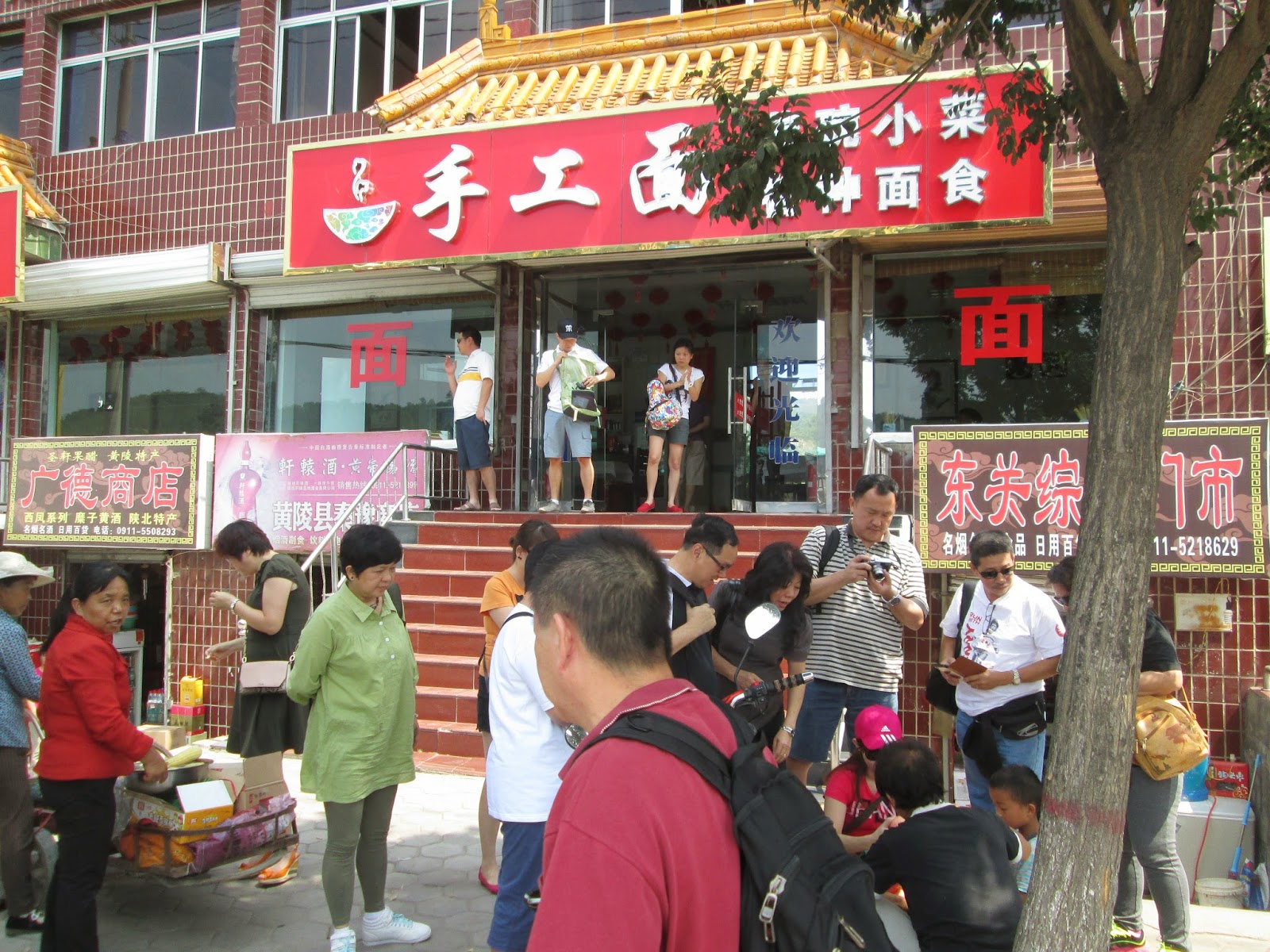




























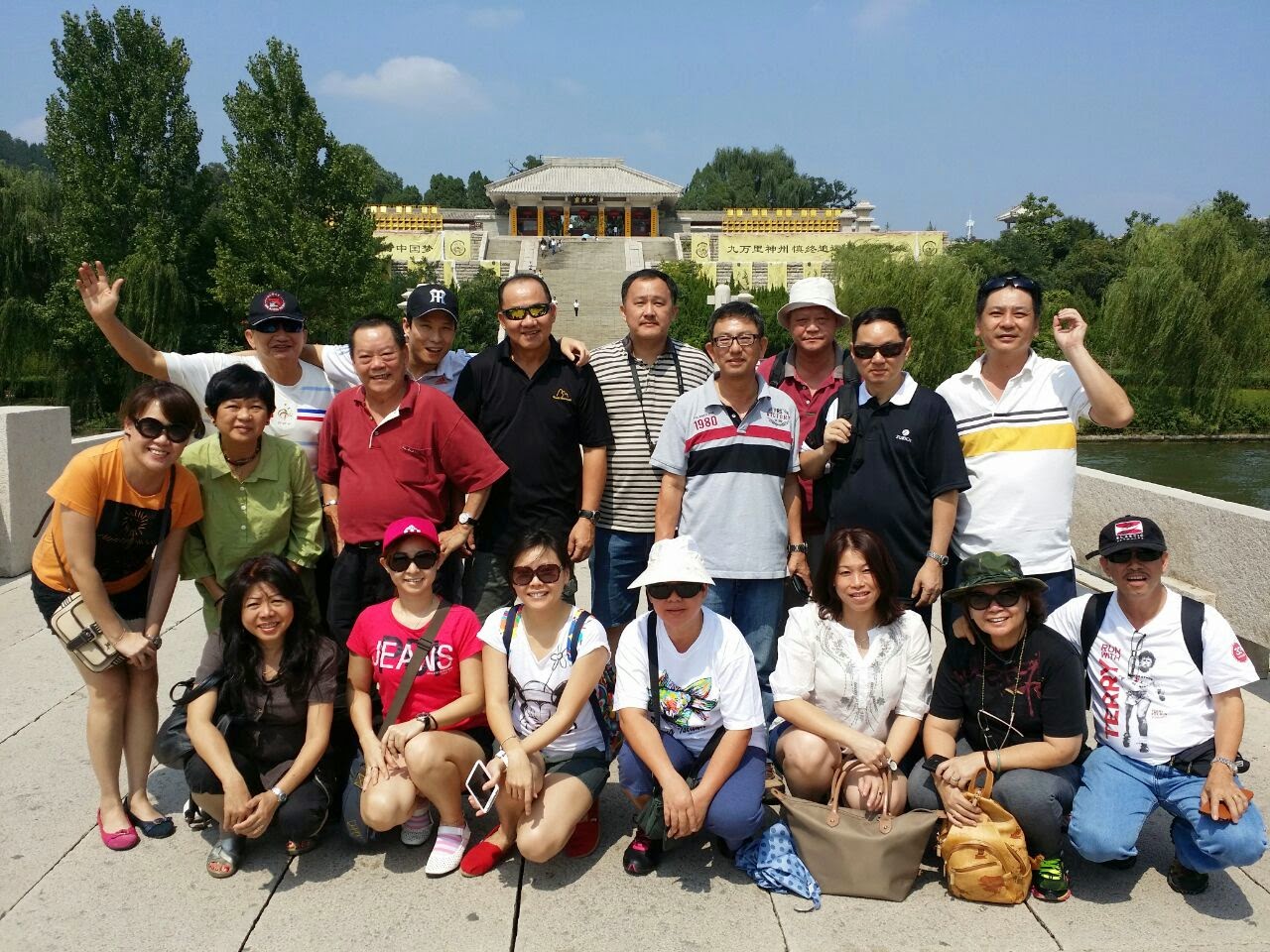












.jpg)


































































































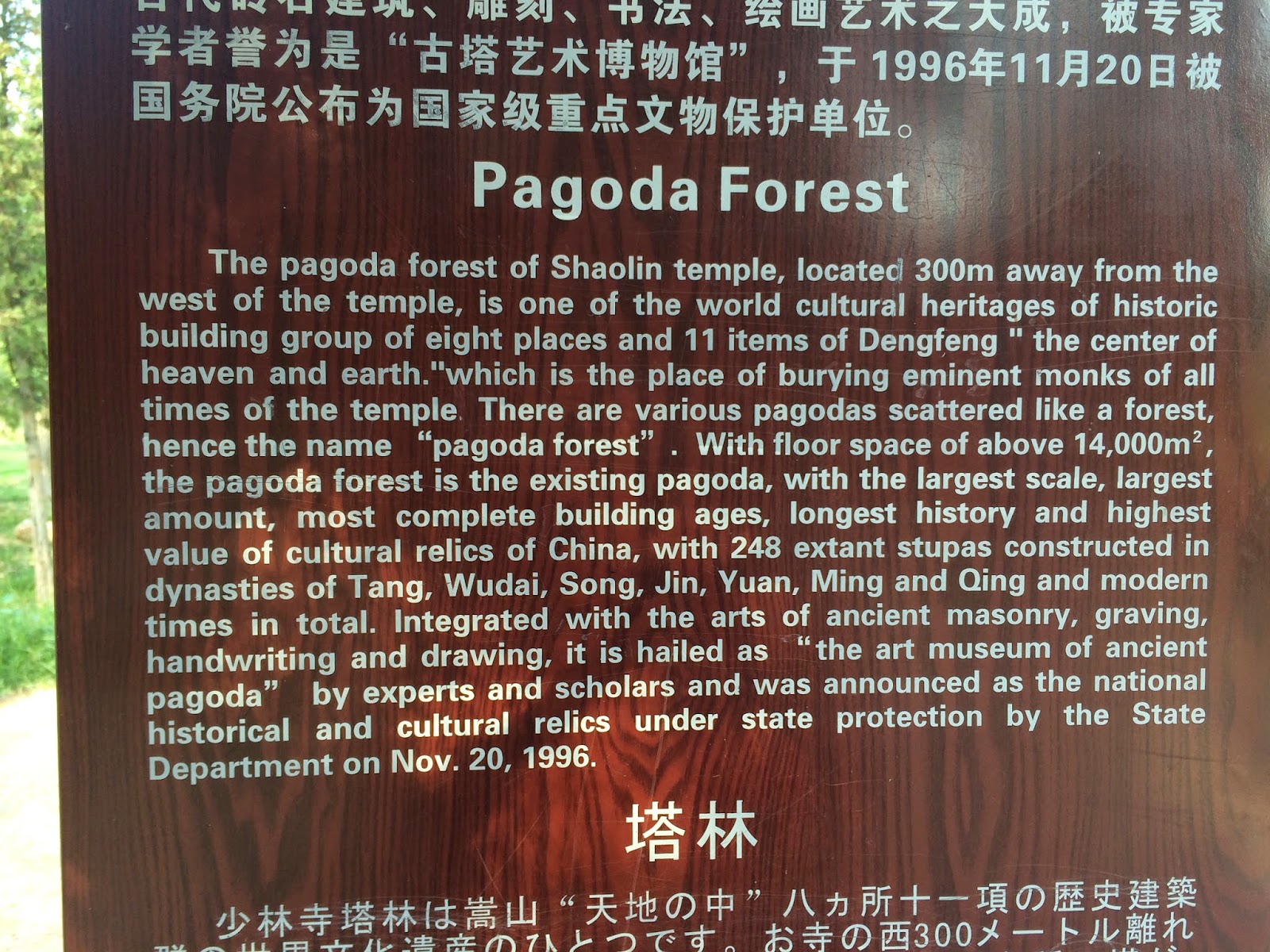
















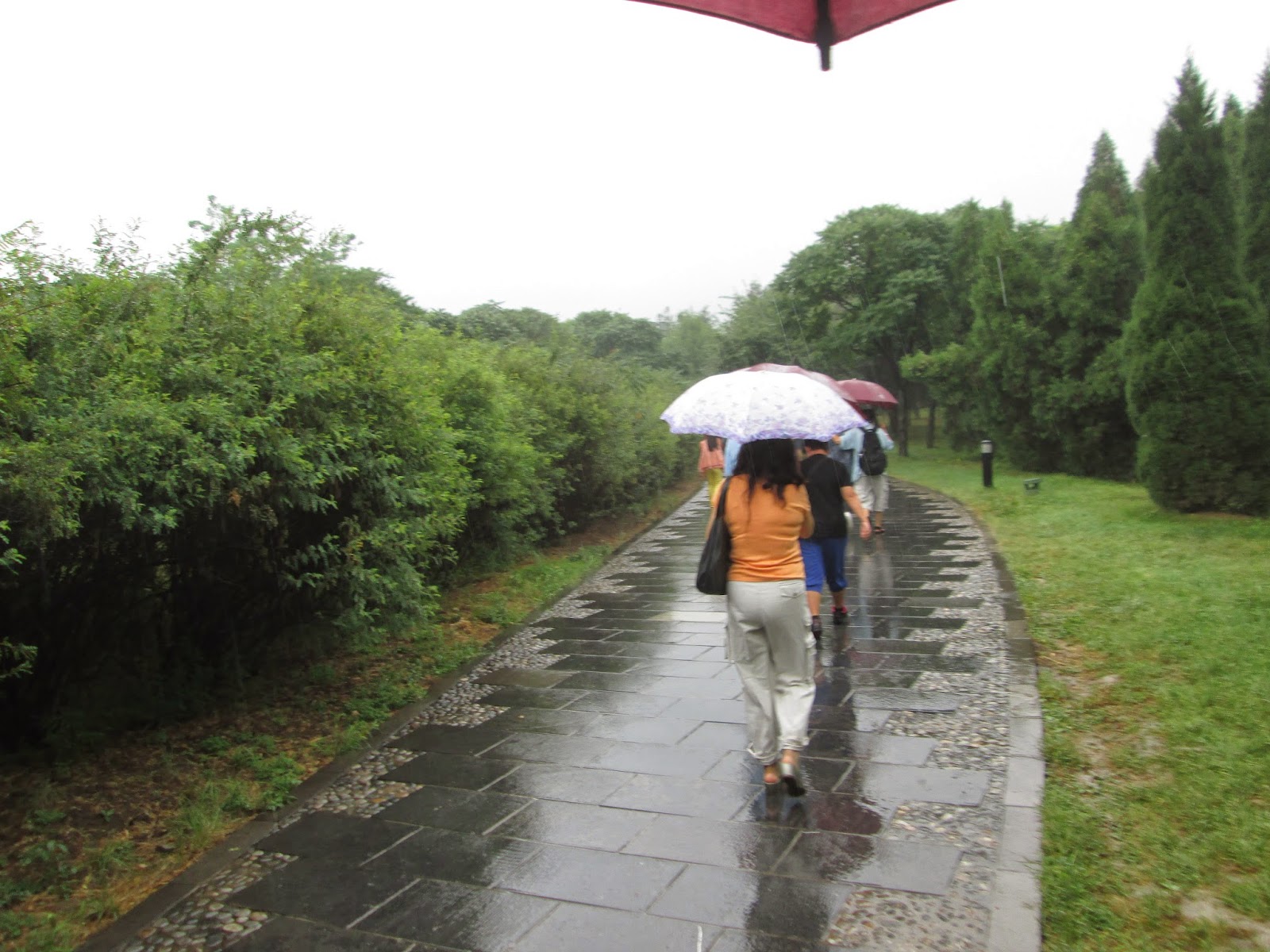




























.jpg)
















































